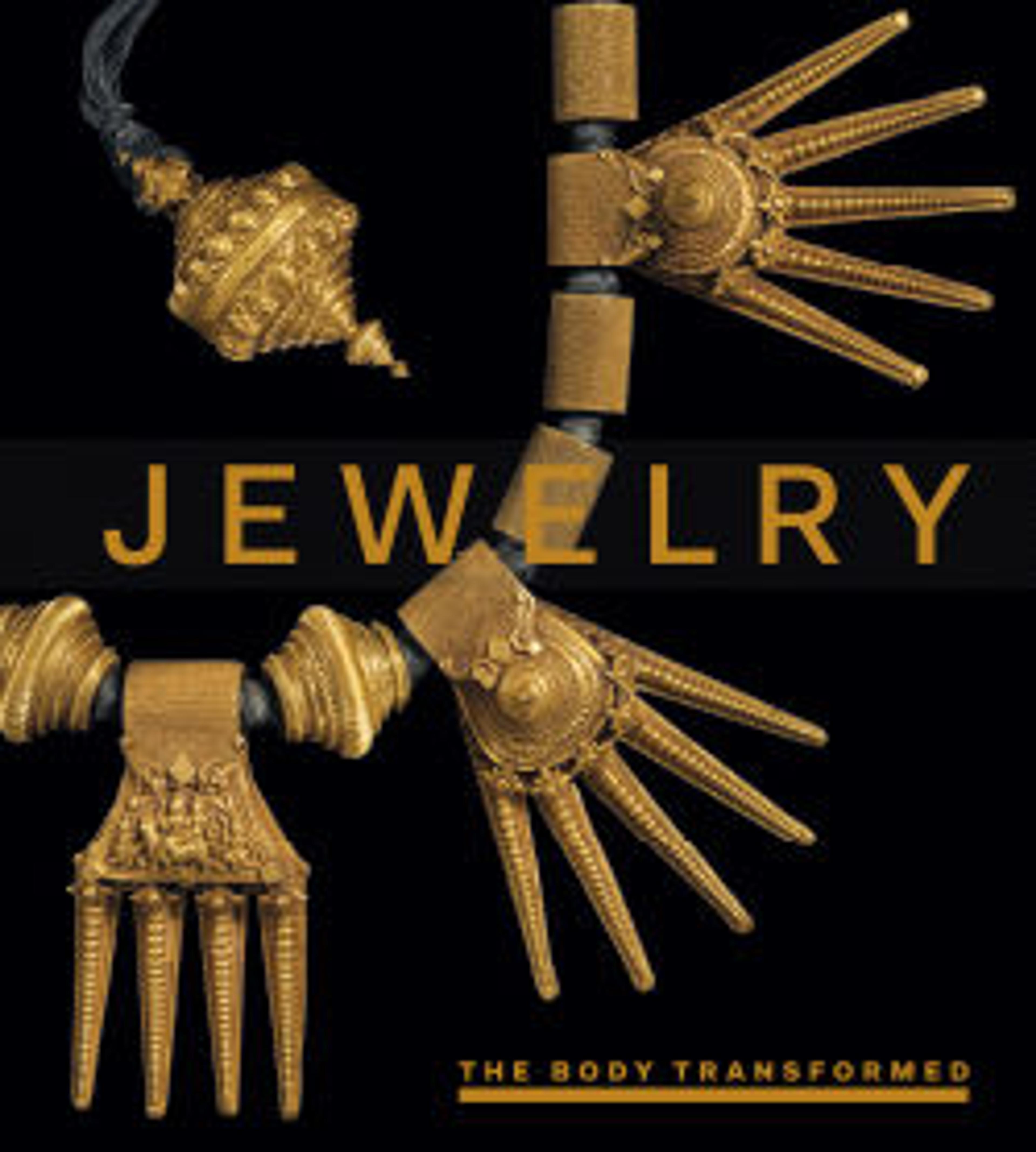Double Crocodile Pendant
This pendant is in the shape of two stylized crocodiles, conjoined at one side. Both crocodiles’ bodies are decorated with a grid of delicate raised lines, which allude to the animal’s scales. The eyes are rosette-shaped, with dots surrounding the pupil. The two loops on either side of the two crocodiles would have been used to hang this pendant around the neck.
Exquisite pendants such as this one might be part of a matrilineal family’s sacred inheritance, which is a group of precious objects often kept together in a separate room as a shrine to the family’s ancestors. Such gold adornments are only worn or displayed by family members on special occasions, such as funerals or visits to other villages. Among Akan peoples, figural forms featured on such ornaments often refer to proverbs and bear symbolic meaning: this particular pendant represents the popular Siamese twin-crocodile motif known as futumfunafu. With their shared stomachs but distinct heads, they allude to the challenges of aligning community and personal interests.
Further reading
Appiah, Peggy, and Kwame Anthony Appiah. “Some Akan Proverbs.” New England Review (1990-) 21, no. 1 (2000):119–127. www.jstor.org/stable/40244520.
Art of Oceania, Africa, and the Americas from the Museum of Primitive Art, Exhibition Catalogue. Metropolitan Museum of Art. 1969.
Garrard, Timothy F. Gold of Africa: Jewellery and Ornaments from Ghana, Côte D'Ivoire, Mali and Senegal. Geneva: Barbier-Mueller Museum. 1989.
Newton, Douglas, André Malraux, and Nelson A. Rockefeller. Masterpieces of primitive art: the Nelson A. Rockefeller collection. Knopf, 1978.
Vogel, Susan M. Baule Art as the Expression of a World View. New York: New York University Press, 1977.
Vogel, Susan M. "Baule: African Art Western Eyes." African arts 30, no. 4 (1997): 64-95.
Exquisite pendants such as this one might be part of a matrilineal family’s sacred inheritance, which is a group of precious objects often kept together in a separate room as a shrine to the family’s ancestors. Such gold adornments are only worn or displayed by family members on special occasions, such as funerals or visits to other villages. Among Akan peoples, figural forms featured on such ornaments often refer to proverbs and bear symbolic meaning: this particular pendant represents the popular Siamese twin-crocodile motif known as futumfunafu. With their shared stomachs but distinct heads, they allude to the challenges of aligning community and personal interests.
Further reading
Appiah, Peggy, and Kwame Anthony Appiah. “Some Akan Proverbs.” New England Review (1990-) 21, no. 1 (2000):119–127. www.jstor.org/stable/40244520.
Art of Oceania, Africa, and the Americas from the Museum of Primitive Art, Exhibition Catalogue. Metropolitan Museum of Art. 1969.
Garrard, Timothy F. Gold of Africa: Jewellery and Ornaments from Ghana, Côte D'Ivoire, Mali and Senegal. Geneva: Barbier-Mueller Museum. 1989.
Newton, Douglas, André Malraux, and Nelson A. Rockefeller. Masterpieces of primitive art: the Nelson A. Rockefeller collection. Knopf, 1978.
Vogel, Susan M. Baule Art as the Expression of a World View. New York: New York University Press, 1977.
Vogel, Susan M. "Baule: African Art Western Eyes." African arts 30, no. 4 (1997): 64-95.
Artwork Details
- Title:Double Crocodile Pendant
- Artist:Lagoon artist
- Date:19th–mid-20th century
- Geography:Côte d'Ivoire
- Culture:Lagoon peoples
- Medium:Gold
- Dimensions:H. 3 3/4 x W. 3 3/4 in. (9.5 x 9.5 cm)
- Classification:Metal-Ornaments
- Credit Line:The Michael C. Rockefeller Memorial Collection, Bequest of Nelson A. Rockefeller, 1979
- Object Number:1979.206.151
- Curatorial Department: The Michael C. Rockefeller Wing
More Artwork
Research Resources
The Met provides unparalleled resources for research and welcomes an international community of students and scholars. The Met's Open Access API is where creators and researchers can connect to the The Met collection. Open Access data and public domain images are available for unrestricted commercial and noncommercial use without permission or fee.
To request images under copyright and other restrictions, please use this Image Request form.
Feedback
We continue to research and examine historical and cultural context for objects in The Met collection. If you have comments or questions about this object record, please contact us using the form below. The Museum looks forward to receiving your comments.
